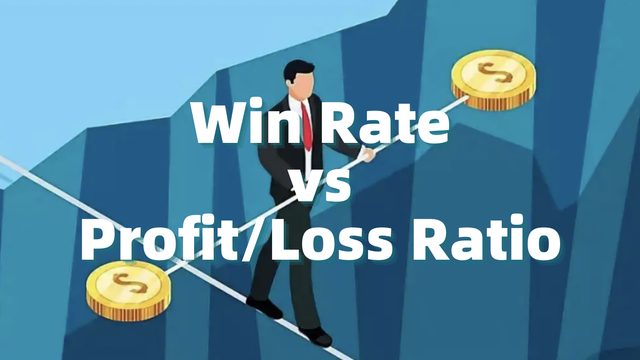Amid the declining spot market, futures, a type of financial derivatives, have come under the spotlight among investors. According to Coinglass, the average daily trading volume of futures on the entire network is more than twice that of the spot. Considering such a huge figure, it is important yet difficult for all futures investors to make profits using high leverage based on their judgment on market trends.
We may find the solution in two terms, the win rate and profit/loss ratio, as well as their relationship.

What is the win rate in futures?
As the name suggests, the win rate is the probability of a winning trade.
Formula: Win Rate = Number of Wins / Total Number of Trades * 100%
Say, a futures trader makes 10 trades and wins profits in 5 of these trades, so his win rate is 50%. Despite the seemingly moderate real win rate and possibilities of stopping loss, he still profits a lot.
As suggested in the book Technical Analysis of the Financial Markets, “the best futures traders make money on only 40% of their trades”. Though important, a high win rate is hard to maintain in a volatile market. According to the statistics for the past decade, the average win rate of top traders on Wall Street ranges between 35% and 50% only. As such, how can we profit from the futures market?
What is the profit/loss ratio?
That’s when the profit/loss ratio comes in.
Formula: Profit/loss Ratio = Average Amount of Profits/Average Amount of Losses
Say we toss a coin. You get 1 USDT if you win, or lose 1 USDT if you guess wrong. In this case, the profit/loss ratio is 1:1. You get 3 USDT if you win, or lose 1 USDT if you’re wrong. In this case, however, the profit/loss ratio is 3:1.
Assuming that Trader A opens a position of 10,000 USDT, the relationship between the win rate and the profit/loss ratio is as follows:

As you can see from the above table, you can still profit with a low win rate. Even if your win rate is only 30%, your trade remains profitable in the long term as long as the profit/loss ratio is at a high level.
How to increase the profit/loss ratio?
The answer lies in the formula of the profit/loss ratio: we can either increase the average profits or reduce the average losses.
That seems like a paradox as the profit/loss ratio of each trade remains uncertain until it is settled and traders can hardly determine the future profits. Yet still, we can set the maximum loss for each transaction, which is the stop-loss price as we know. After the stop-loss price, or in other words the exit condition, is set, once the conditions are met, positions will be closed even if you bet on a wrong direction and suffer losses, thus protecting you from greater losses.
In this sense, Take-Profit & Stop-Loss is indeed a useful tool. Suppose in each trade with a fixed position, the stop-loss price is set to 10% of the initial amount, and the take-profit price is set to 20% of the initial amount. The profit/loss ratio is 2:1. As long as the win rate reaches 33%, the account can break even.
Traders usually misjudge the market, yet those sensible maximize their profits, not the number of wins. Apart from the above know-how, another essential factor of profiting from the futures market is the unity between your knowledge and your trading strategy. After all, most traders suffer losses not because they’re ignorant of the theoretical knowledge but because they blindly take a different path in real trade.
*The above cannot be relied on as any investment advice.